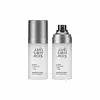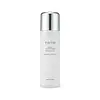What's inside
What's inside
 Key Ingredients
Key Ingredients

No key ingredients
 Benefits
Benefits

 Concerns
Concerns

 Ingredients Side-by-side
Ingredients Side-by-side

Onsen-Sui
Butylene Glycol
HumectantGlycerin
HumectantGlycereth-26
HumectantPropanediol
Solvent1,2-Hexanediol
Skin ConditioningPhenoxyethanol
PreservativePEG-60 Hydrogenated Castor Oil
EmulsifyingPolyglyceryl-2 Oleate
EmulsifyingDiphenyl Dimethicone
EmollientWater
Skin ConditioningTriethylhexanoin
MaskingHydrogenated Lecithin
EmulsifyingEthylhexylglycerin
Skin ConditioningParfum
MaskingSodium Citrate
BufferingDisodium EDTA
Citric Acid
BufferingOctyldodeceth-16
EmulsifyingHydrolyzed Pearl
Skin ConditioningPolyester-5
Saccharomyces Ferment
Skin ConditioningTillandsia Usneoides Extract
Skin ConditioningEthyl Hexanediol
SolventChamomilla Recutita Flower Water
MaskingOnsen-Sui, Butylene Glycol, Glycerin, Glycereth-26, Propanediol, 1,2-Hexanediol, Phenoxyethanol, PEG-60 Hydrogenated Castor Oil, Polyglyceryl-2 Oleate, Diphenyl Dimethicone, Water, Triethylhexanoin, Hydrogenated Lecithin, Ethylhexylglycerin, Parfum, Sodium Citrate, Disodium EDTA, Citric Acid, Octyldodeceth-16, Hydrolyzed Pearl, Polyester-5, Saccharomyces Ferment, Tillandsia Usneoides Extract, Ethyl Hexanediol, Chamomilla Recutita Flower Water
Water
Skin ConditioningPropanediol
SolventGlycerin
HumectantHydrogenated Poly(C6-14 Olefin)
Emollient1,2-Hexanediol
Skin ConditioningTriethylhexanoin
MaskingHydrogenated Lecithin
EmulsifyingPhenyl Trimethicone
Skin ConditioningCarbomer
Emulsion StabilisingTromethamine
BufferingHydroxypropyl Methylcellulose
Emulsion StabilisingDipropylene Glycol
HumectantEclipta Prostrata Leaf Extract
Skin ConditioningParfum
MaskingLaminaria Japonica Extract
Skin ProtectingEthylhexylglycerin
Skin ConditioningAdenosine
Skin ConditioningDisodium EDTA
Agave Tequilana Leaf Extract
AstringentFructooligosaccharides
HumectantDextrin
AbsorbentTheobroma Cacao Seed Extract
AntioxidantBeta-Glucan
Skin ConditioningCollagen
MoisturisingHydrolyzed Hyaluronic Acid
HumectantLeuconostoc/Radish Root Ferment Filtrate
AntimicrobialOenothera Biennis Flower Extract
AstringentCamellia Sinensis Leaf Extract
AntimicrobialGinkgo Biloba Leaf Extract
Skin ConditioningButylene Glycol
HumectantBrassica Oleracea Italica Sprout Extract
EmollientCamellia Japonica Leaf Extract
Skin ConditioningEruca Sativa Leaf Extract
Skin ConditioningMedicago Sativa Extract
TonicTriticum Vulgare Sprout Extract
Skin ConditioningSolanum Melongena Fruit Extract
Skin ConditioningTocopherol
AntioxidantMorus Alba Bark Extract
Skin ConditioningCinnamomum Camphora Leaf Extract
MaskingTrichosanthes Kirilowii Root Extract
Skin ProtectingWater, Propanediol, Glycerin, Hydrogenated Poly(C6-14 Olefin), 1,2-Hexanediol, Triethylhexanoin, Hydrogenated Lecithin, Phenyl Trimethicone, Carbomer, Tromethamine, Hydroxypropyl Methylcellulose, Dipropylene Glycol, Eclipta Prostrata Leaf Extract, Parfum, Laminaria Japonica Extract, Ethylhexylglycerin, Adenosine, Disodium EDTA, Agave Tequilana Leaf Extract, Fructooligosaccharides, Dextrin, Theobroma Cacao Seed Extract, Beta-Glucan, Collagen, Hydrolyzed Hyaluronic Acid, Leuconostoc/Radish Root Ferment Filtrate, Oenothera Biennis Flower Extract, Camellia Sinensis Leaf Extract, Ginkgo Biloba Leaf Extract, Butylene Glycol, Brassica Oleracea Italica Sprout Extract, Camellia Japonica Leaf Extract, Eruca Sativa Leaf Extract, Medicago Sativa Extract, Triticum Vulgare Sprout Extract, Solanum Melongena Fruit Extract, Tocopherol, Morus Alba Bark Extract, Cinnamomum Camphora Leaf Extract, Trichosanthes Kirilowii Root Extract
 Reviews
Reviews

Ingredients Explained
These ingredients are found in both products.
Ingredients higher up in an ingredient list are typically present in a larger amount.
1,2-Hexanediol is a synthetic liquid and another multi-functional powerhouse.
It is a:
- Humectant, drawing moisture into the skin
- Emollient, helping to soften skin
- Solvent, dispersing and stabilizing formulas
- Preservative booster, enhancing the antimicrobial activity of other preservatives
Butylene Glycol (or BG) is used within cosmetic products for a few different reasons:
Overall, Butylene Glycol is a safe and well-rounded ingredient that works well with other ingredients.
Though this ingredient works well with most skin types, some people with sensitive skin may experience a reaction such as allergic rashes, closed comedones, or itchiness.
Learn more about Butylene GlycolDisodium EDTA plays a role in making products more stable by aiding other preservatives.
It is a chelating agent, meaning it neutralizes metal ions that may be found in a product.
Disodium EDTA is a salt of edetic acid and is found to be safe in cosmetic ingredients.
Learn more about Disodium EDTAEthylhexylglycerin (we can't pronounce this either) is commonly used as a preservative and skin softener. It is derived from glyceryl.
You might see Ethylhexylglycerin often paired with other preservatives such as phenoxyethanol. Ethylhexylglycerin has been found to increase the effectiveness of these other preservatives.
Glycerin is already naturally found in your skin. It helps moisturize and protect your skin.
A study from 2016 found glycerin to be more effective as a humectant than AHAs and hyaluronic acid.
As a humectant, it helps the skin stay hydrated by pulling moisture to your skin. The low molecular weight of glycerin allows it to pull moisture into the deeper layers of your skin.
Hydrated skin improves your skin barrier; Your skin barrier helps protect against irritants and bacteria.
Glycerin has also been found to have antimicrobial and antiviral properties. Due to these properties, glycerin is often used in wound and burn treatments.
In cosmetics, glycerin is usually derived from plants such as soybean or palm. However, it can also be sourced from animals, such as tallow or animal fat.
This ingredient is organic, colorless, odorless, and non-toxic.
Glycerin is the name for this ingredient in American English. British English uses Glycerol/Glycerine.
Learn more about GlycerinHydrogenated Lecithin is created from the hydrogenation of lecithin (a group of phospholipids). Hydrogenation is a chemical reaction between hydrogen and another element.
This ingredient is an emollient and emulsifier. As an emollient, it helps soften skin by trapping moisture within. As an emulsifier, it prevents oil and water ingredients from separating.
Parfum is a catch-all term for an ingredient or more that is used to give a scent to products.
Also called "fragrance", this ingredient can be a blend of hundreds of chemicals or plant oils. This means every product with "fragrance" or "parfum" in the ingredients list is a different mixture.
For instance, Habanolide is a proprietary trade name for a specific aroma chemical. When used as a fragrance ingredient in cosmetics, most aroma chemicals fall under the broad labeling category of “FRAGRANCE” or “PARFUM” according to EU and US regulations.
The term 'parfum' or 'fragrance' is not regulated in many countries. In many cases, it is up to the brand to define this term.
For instance, many brands choose to label themselves as "fragrance-free" because they are not using synthetic fragrances. However, their products may still contain ingredients such as essential oils that are considered a fragrance by INCI standards.
One example is Calendula flower extract. Calendula is an essential oil that still imparts a scent or 'fragrance'.
Depending on the blend, the ingredients in the mixture can cause allergies and sensitivities on the skin. Some ingredients that are known EU allergens include linalool and citronellol.
Parfum can also be used to mask or cover an unpleasant scent.
The bottom line is: not all fragrances/parfum/ingredients are created equally. If you are worried about fragrances, we recommend taking a closer look at an ingredient. And of course, we always recommend speaking with a professional.
Learn more about ParfumPropanediol is an all-star ingredient. It softens, hydrates, and smooths the skin.
It’s often used to:
Propanediol is not likely to cause sensitivity and considered safe to use. It is derived from corn or petroleum with a clear color and no scent.
Learn more about PropanediolTriethylhexanoin is created from glycerin and 2-ethylhexanoic acid. It is a solvent and emollient.
As a solvent, Triethylhexanoin helps dissolve ingredients to stable bases or help evenly distribute ingredients throughout the product.
It is also an emollient and helps condition the skin.
Learn more about TriethylhexanoinWater. It's the most common cosmetic ingredient of all. You'll usually see it at the top of ingredient lists, meaning that it makes up the largest part of the product.
So why is it so popular? Water most often acts as a solvent - this means that it helps dissolve other ingredients into the formulation.
You'll also recognize water as that liquid we all need to stay alive. If you see this, drink a glass of water. Stay hydrated!
Learn more about Water